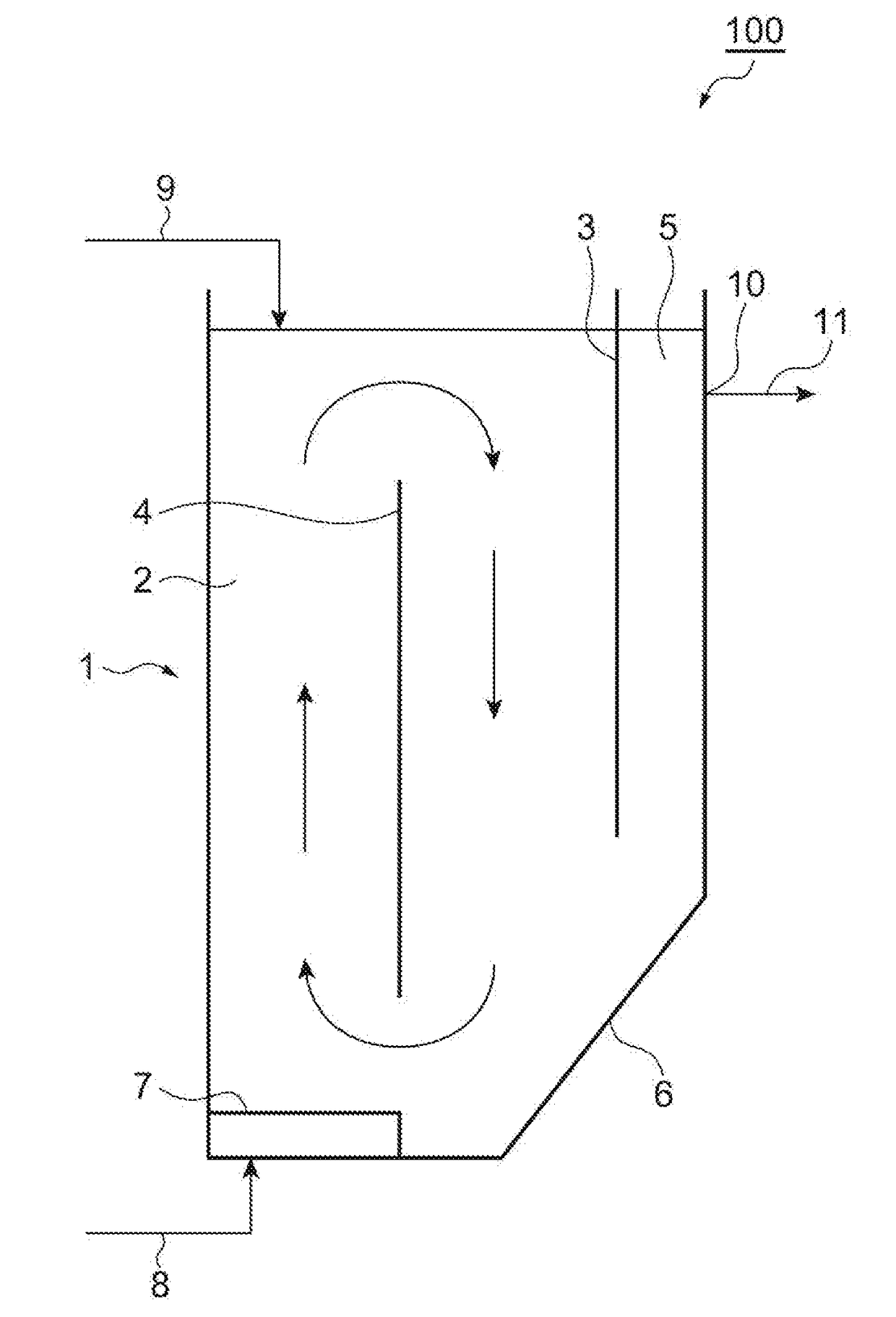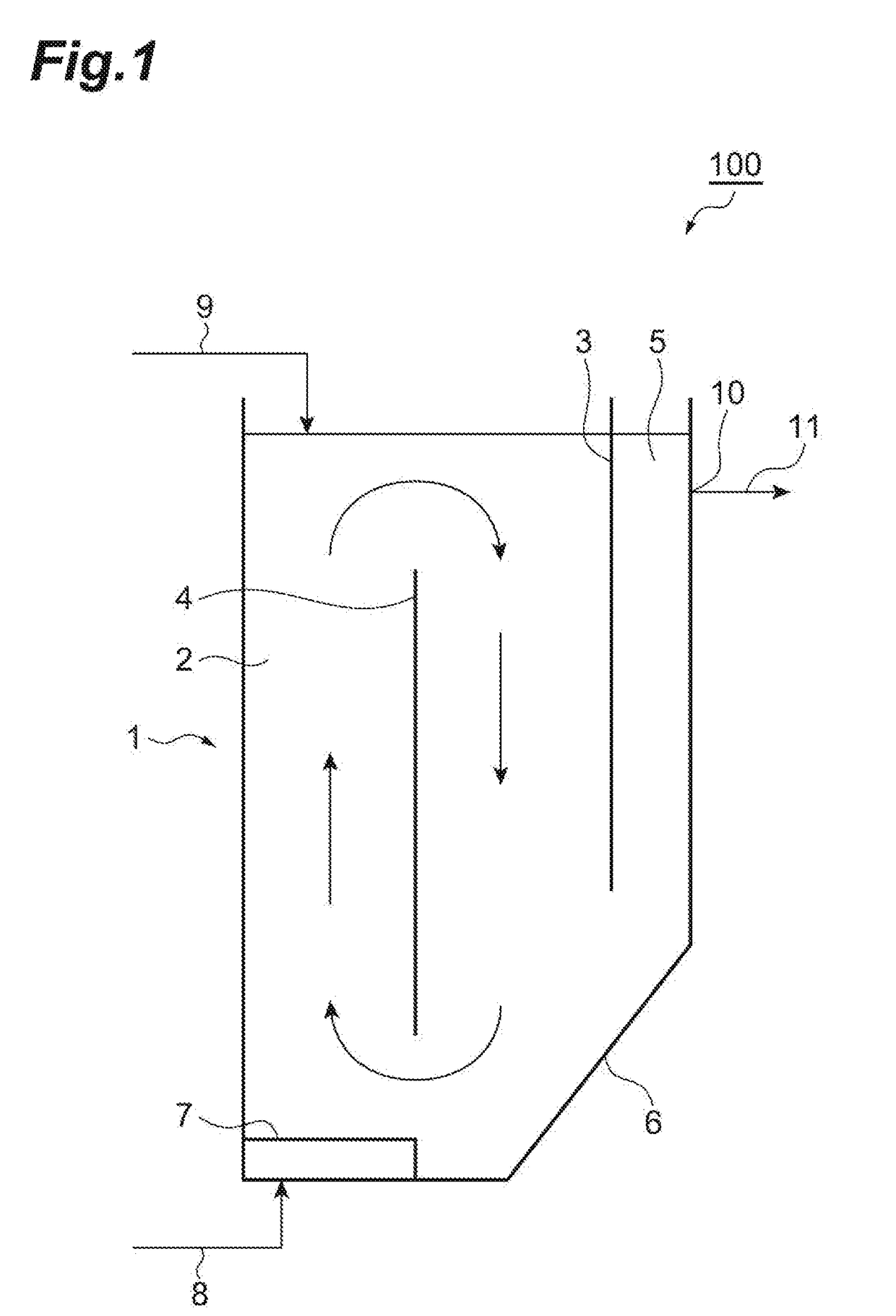Method for producing microbiologic agent, and microbiologic agent
- Summary
- Abstract
- Description
- Claims
- Application Information
AI Technical Summary
Benefits of technology
Problems solved by technology
Method used
Image
Examples
example 1
(Material)
[0060]Concentrates of components to be used in the production of a medium was prepared by a method described below. 35.4 g of (NH4)2SO4 and 7.7 g of Na2HPO4 were dissolved in 500 mL of pure water to obtain a nitrogen phosphorus solution containing 15000 mg / L of ammonia nitrogen. 110 g of KCl, 50 g of CaCl2.2H2O and 1 mg of CoCl2 were dissolved in 1000 mL of pure water to obtain Inorganic salt solution 1. 5 mg of NaMoO4.2H2O was dissolved in 1000 mL of pure water to obtain Inorganic salt solution 2. 85 g MgSO4.7H2O, 8.5 g of FeSO4.7H2O, 2 g of MnSO4.5H2O, 100 mg of ZnSO4, and 100 mg of CuSO4.5H2O were dissolved in 1000 mL of pure water to obtain Inorganic salt solution 3. The medium to be supplied during culture was produced by dissolving 0.2 g of (NH4)2SO4 and 1.54 g of Na2HPO4 in 1000 mL of pure water and adding 1 ml of Inorganic salt solution 1, 1 ml of Inorganic salt solution 2, and 1 mL of Inorganic salt solution 3. An amount required of the medium was produced as need...
example 2
(Material)
[0084]Concentrates of components to be used in the production of a medium was prepared by a method described below. 100 g of MgSO4.7H2O was dissolved in 1000 mL of pure water to obtain Inorganic salt solution A. 4.152 g of Na2HPO4, 2.244 g of NaH2PO4, and 1.2 g of (NH4)2SO4 were dissolved in 300 mL of pure water to obtain Inorganic salt solution B. A (S)-2-(4-chlorophenyl)-3-methylbutanoic acid solution (10 g / L) obtained by dissolving 1.18 g of (S)-2-(4-chlorophenyl)-3-methylbutanoic acid (with a purity of about 85% by mass) in 100 mL of pure water was used. A dispersion liquid of an inorganic microparticle carrier was prepared by adding, mixing, and suspending 50 g of incineration ash of activated sludge to 250 ml of pure water. An activated sludge suspension obtained by collecting activated sludge from an aeration tank of a chemical factory was used as it is. The medium to be supplied during culture was produced by dissolving 1.0 g of (NH4)2SO4, 1.3 g of Na2HPO4, and 0.9...
example 3
[0101]As inorganic salt solutions to be used in the production of a medium, Inorganic salt solution 1, Inorganic salt solution 2, and Inorganic salt solution 3 same as those in Example 1 were used. The (S)-2-(4-chlorophenyl)-3-methylbutanoic acid solution same as that in Example 2 was used. The inflow water was produced by dissolving 1 mL of the (S)-2-(4-chlorophenyl)-3-methylbutanoic acid solution, 1 g of (NH4)2SO4, 1.298 g of Na2HPO4, 0.912 g of NaH2PO4 in 1000 mL of pure water and adding 1 ml of Inorganic salt solution 1, 1 ml of Inorganic salt solution 2, and 1 mL of Inorganic salt solution 3. An amount required of the inflow water was produced as needed for continuous supply during the (S)-2-(4-chlorophenyl)-3-methylbutanoic acid removal reaction period. An activated sludge suspension obtained by collecting activated sludge from an aeration tank of a chemical factory was used as it is.
((S)-2-(4-chlorophenyl)-3-methylbutanoic Acid Removal Reaction
[0102]The (S)-2-(4-chlorophenyl)...
PUM
| Property | Measurement | Unit |
|---|---|---|
| Electrical conductance | aaaaa | aaaaa |
| Mass | aaaaa | aaaaa |
| Mass | aaaaa | aaaaa |
Abstract
Description
Claims
Application Information
 Login to View More
Login to View More - R&D
- Intellectual Property
- Life Sciences
- Materials
- Tech Scout
- Unparalleled Data Quality
- Higher Quality Content
- 60% Fewer Hallucinations
Browse by: Latest US Patents, China's latest patents, Technical Efficacy Thesaurus, Application Domain, Technology Topic, Popular Technical Reports.
© 2025 PatSnap. All rights reserved.Legal|Privacy policy|Modern Slavery Act Transparency Statement|Sitemap|About US| Contact US: help@patsnap.com



